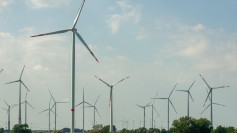China will invest more to develop its shale gas resources in a national effort to rid itself of its heavy reliance on the United States for this product.
A new report by the oil and gas department at the National Energy Administration (NEA) and a research unit of the State Council calls for China to expand its natural gas production in key resource basins in the southwestern province of Sichuan, the Erdos basin in the north and offshore. China's economic growth will still be fueled by oil and gas.
Sichuan is the key region for China's young shale gas development program. China's shale gas output might reach 280 billion cubic meters (bcm), or 23% of the country's total gas output, by 2035, according to Zhao Wenzhi, president of Exploration and Production Institute at state giant PetroChina. In 2018, China produced about 10.9 cm shale gas or 7% of China's total gas output of 161 bcm.
The jump in future shale gas output requires that companies drill over 500 wells a year between 2019 and 2035, or double the 2018 level. Zhao said to expedite the growth, the government should consider offering tax perks such as waiving the resource tax on the shale gas.
China recently also announced a policy to extend for another three years the subsidies on domestic production of unconventional gas. Experts noted China faces complex geology and a lack of technological breakthroughs that can make shale gas a profitable enough business to lure private investments.
The report said China's gas consumption will rise by 10 percent this year to 310 bcm. This growth rate, however, is 17.5 percent lower than that of 2018,
The report pointed out 2019's growth represents an annual addition of 28 bcm, which is larger than the annual average growth of 19 bcm from 2007 to 2018.
China remains the world's second-largest buyer of the super-chilled fuel such as liquefied natural gas (LNG).
Because of Trump's trade war, China imposed tariffs on imports of LNG from the United States in 2018. It needs to make up somehow for all that lost gas.
"China's reliance oil and gas imports is growing too rapidly, with oil topping 70 percent and gas moving toward 50 percent," said Lin Boqiang, Director of the Energy Economics Institute at Xiamen University.
In response, the NEA report calls for building the Sichuan basin into China's top gas center due to its rich resource base in both conventional gas fields and unconventional resources such as shale gas and 'tight gas,' which is a low-permeability gas derived from reservoir rocks. Tight gas, however, is too costly to develop.
"Through expanding the development of deep-reservoir gas, tight gas and shale gas, Sichuan is likely to account for about a third of the country's total natural gas output," according to the report. Sichuan currently provides 20 percent of China's total natural gas output
Experts say shale gas production in Sichuan might overtake conventional gas in output in the near future.






